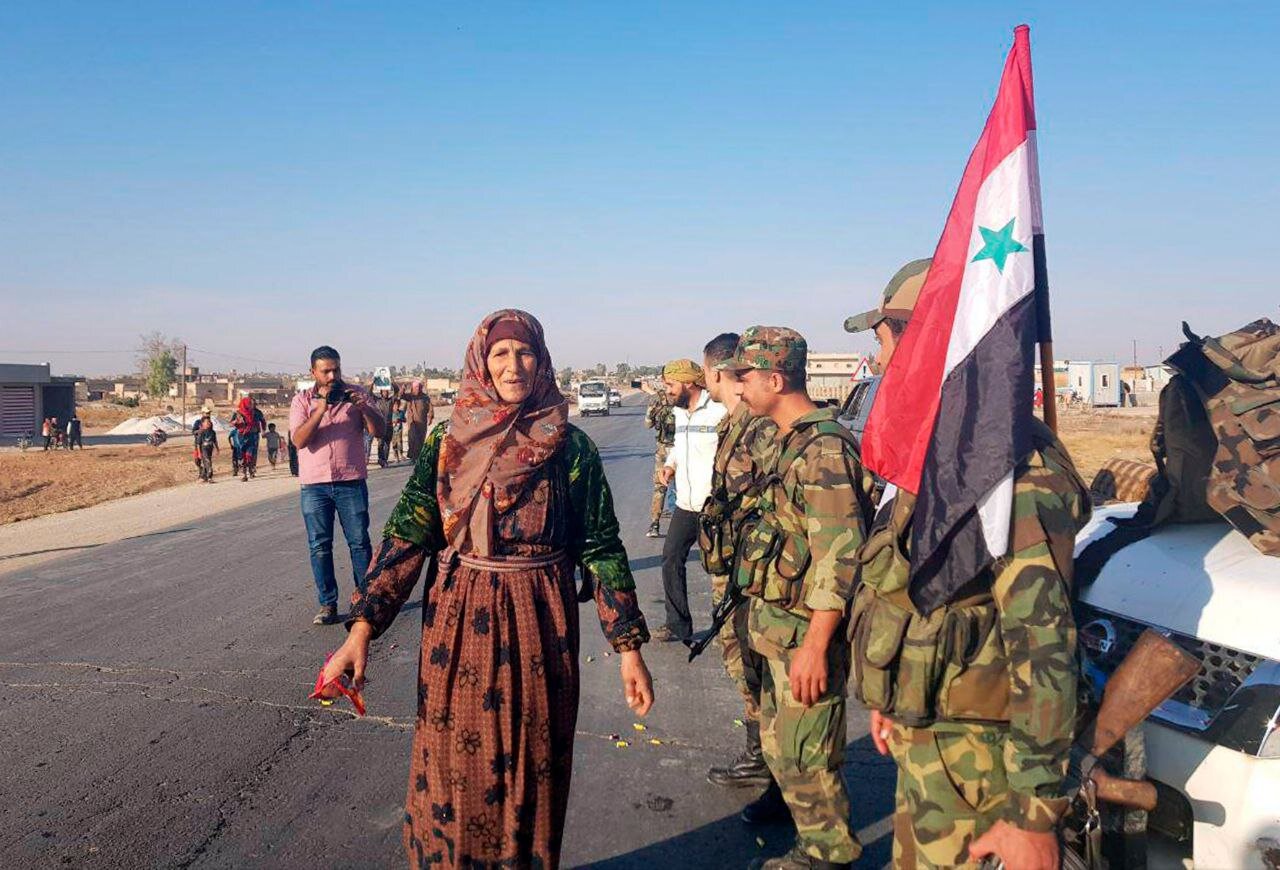Syria redeploys troops in Hama as a war tactic

TEHRAN - The Syrian army has bombarded terrorist positions after they took control of many areas in Hama, the second city to slip from the government’s hands.
The Syrian Ministry of Defense announced artillery, missile, and aerial strikes in coordination with Russian aviation on vehicles and terrorist gatherings in the northern and southern Hama countryside.
The ministry confirmed these strikes resulted in the death and injury of dozens of terrorists in the areas targeted by the Syrian armed forces.
In violation of the Astana process, militants waged a wide-scale offensive from northwestern Idlib city.
The terrorists took control of Aleppo to the east of Idlib with lightning speed at a time when the Syrian army was heavily deployed in the south of the Arab country near Lebanon amid tensions with the Israeli regime.
On Thursday night, the militants, whom experts say are being heavily backed with arms and logistics by foreign powers also took control of many regions in Hama, to the south of Idlib.
This followed 24 hours of heavy fighting in the strategic Mount Zain al-Abidin in the western Hama countryside that overlooks the city.
The terrorist groups have vowed to move further south to the neighboring city of Homs.
The offensive has been branded by foreign observers as the greatest threat to the survival of the Syrian government.
Analysts dispute this, saying the Arab country faced a much larger threat in 2017 when terrorist groups controlled many more regions but the Syrian army managed to fight them off.
According to reporters in Syria, government forces have targeted a convoy of militants in an area between Hama and Homs that was traveling from the direction of Hama.
The Syrian army has also redeployed some of its forces to the town of Rabia and the city of Masyaf on the northern outskirts of Hama province.
Reports have also indicated that the Syrian army has managed to station itself on Mount Zain al-Abidin and is engaged in intense battles with militants.
So far, the government has avoided fighting the terrorist groups led by the al-Qaeda-affiliated Hayat Tahrir al-Sham (HTS) inside Aleppo and Hama to minimize civilian casualties and heavy destruction to the cities again.
This comes amid a large wave of displaced civilians from Hama’s countryside that has seen heavy traffic in the direction of the port cities of Tartus and Latakia on the Mediterranean coast.
The Syrian army also repelled an attack by terrorist groups, which mostly comprised of Turkistani, Uzbek, and Tajik nationals in Latakia province. Reports say that the Syrian army thwarted the attack by the foreign terrorists on Turkmen Mountain in the northern Latakia countryside.
The western Homs countryside has also seen a large influx of displaced people even though there is a shortage of accommodation shelters for people fleeing the militants in all three regions.
In the province of Homs itself, armed groups in several towns are said to have caused a difficult incident for the Syrian army as soon as terrorists arrived in Hama.
Towards the end of 2019, the government offered amnesty to all Syrian citizens carrying arms to surrender their weapons in return for freedom or any punitive measures.
Many did so around the country allowing the government to remove army posts and focus on foreign terrorists in flashpoint areas
However, terrorists appear to have now taken advantage of that move by exploiting the absence of the Syrian army outposts.
Amid these pockets of terrorist activities, mostly by sleeper cells, the main concern continues to be the capture of Hama and how the Syrian army will respond.
On Thursday, the General Command of the Syrian Army and Armed Forces announced that the military units stationed in Hama had redeployed outside the city to protect the lives of civilians and prevent them from being caught in the fighting. They confirmed that they would continue their national duty in reclaiming areas occupied by terrorist groups.
Following the Syrian army’s redeployment, Syrian Defense Minister Ali Abbas confirmed that the army is in a “good field position” and that this move was made to preserve civilian lives in the city, explaining that military actions sometimes require repositioning and redeployment as part of battle tactics.
Abbas emphasized that what happened in Hama was a “temporary tactical measure,” and that “our armed forces are still in the vicinity of the city, fully prepared and ready to carry out their national and constitutional duties.”
This comes as the Lebanon-based Al Mayadeen news outlet has cited an informed source close to the terror groups as saying that the goal of the militants’ operation is to reach the Qalamoun area in northern Damascus countryside to prevent any connection between Damascus and Hezbollah and to stop the transfer of weapons from Syria to the Lebanese resistance movement.
Al Mayadeen has also cited a local source in Hama as saying that Arab and Syrian “opposition” media conducted interviews with the residents under intense pressure asking them to speak about the good treatment of the militants, though the residents’ accounts contradicted this narrative.
"We saw with our own eyes how our people died from hunger, thirst, and cold, while the militants entered homes, stealing everything inside before us, insulting us, and hurling the worst degrading insults at all of us,” the source added.
In Aleppo, local sources also confirmed that “militants enter homes under the pretext of searching for pro-government supporters and then proceed to rob and loot the houses in front of the residents, without any deterrence or resistance.”
The major terror offensive in Syria coincided with a ceasefire between the Israeli regime and Lebanon in what many regarded as an opportunity to shift away global attention to the genocidal war on Gaza.
Critics argue that the timing of the foreign-backed developments in Syria is only serving Israeli interests.
Leave a Comment